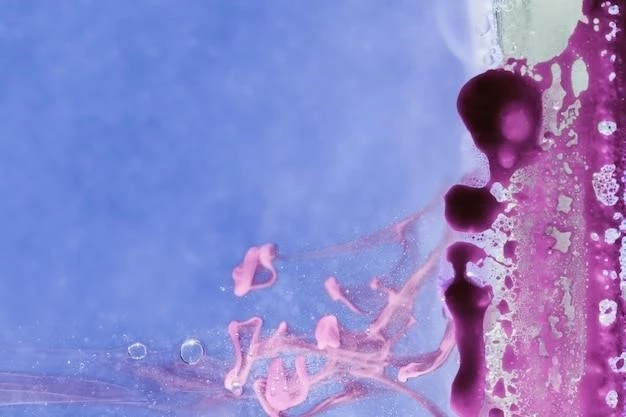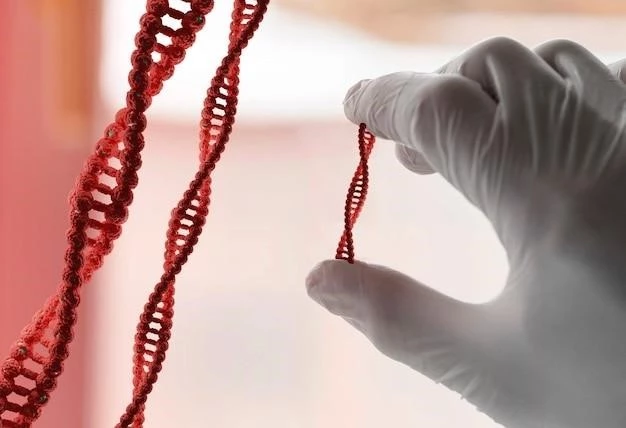Introduction
The Seemanova Syndrome Type 2‚ also known as Nijmegen Breakage Syndrome‚ is a rare chromosomal instability disorder with distinctive features like microcephaly and immunodeficiency. Learn more about this condition in the sections below.
Overview of Seemanova Syndrome Type 2
Seemanova Syndrome Type 2‚ also known as Nijmegen Breakage Syndrome‚ is a rare chromosomal instability disorder characterized by microcephaly‚ immunodeficiency‚ and a high risk of lymphoid malignancies. This autosomal recessive syndrome is associated with mutations in the NBN gene‚ leading to DNA repair impairments and susceptibility to various cancers. With distinctive features like microphthalmia‚ growth retardation‚ and intellectual deficits‚ individuals with this syndrome face challenges in various aspects of their health and development.
Clinical Features
This Syndrome presents a unique combination of microcephaly‚ intellectual deficit‚ growth retardation‚ and hypogenitalism. Its hallmark characteristics also include microphthalmia‚ microcornea‚ and cataracts‚ which contribute to the distinctive facies observed in affected individuals.
Characteristics of Seemanova Syndrome Type 2
Seemanova Syndrome Type 2 is characterized by a unique combination of microcephaly‚ intellectual deficit‚ growth retardation‚ and hypogenitalism. Additionally‚ individuals may exhibit microphthalmia‚ microcornea‚ and cataracts‚ contributing to the distinct facies associated with the syndrome. This autosomal recessive disorder is associated with mutations in the NBN gene‚ leading to chromosomal instability and an increased risk of lymphoid malignancies.
Genetic Basis
The genetic basis of Seemanova Syndrome Type 2 lies in mutations within the NBN gene‚ particularly in exons 6-10. These mutations result in chromosomal instability‚ microcephaly‚ immunodeficiency‚ and an increased predisposition to malignancies.
Role of NBN Gene Mutations
The NBN gene mutations‚ particularly in exons 6-10‚ play a crucial role in Seemanova Syndrome Type 2. These mutations lead to chromosomal instability‚ increasing the risk of malignancies and impairing DNA repair mechanisms‚ resulting in the unique clinical features observed in affected individuals.

Diagnosis
Diagnosing Seemanova Syndrome Type 2 typically involves genetic testing to identify mutations in the NBN gene‚ along with thorough clinical evaluations to assess the characteristic features such as microphthalmia‚ growth retardation‚ and intellectual deficits.
Methods for Diagnosing Seemanova Syndrome Type 2
Diagnosing Seemanova Syndrome Type 2 involves genetic testing to identify NBN gene mutations‚ particularly in exons 6-10. Clinical assessments play a crucial role in evaluating characteristic features like microcephaly‚ intellectual deficits‚ and ophthalmologic anomalies in affected individuals.

Prevalence and Inheritance
The prevalence of Seemanova Syndrome Type 2 is currently unknown. It follows an autosomal recessive pattern of inheritance‚ typically manifesting in infancy or neonatal periods. This condition is coded under ICD-10 as Q87.8.
Incidence and Inheritance Patterns of Seemanova Syndrome Type 2
The prevalence of Seemanova Syndrome Type 2 is unknown. It follows an autosomal recessive inheritance pattern and typically appears in infancy or the neonatal period. The condition is coded as Q87.8 in the ICD-10 classification.
Pathophysiology
The pathophysiology of Seemanova Syndrome Type 2 involves a founder mutation in the NBS1 gene‚ leading to chromosomal instability. This autosomal recessive disorder is most common in West Slavic populations.
Mechanism of Chromosomal Instability in Seemanova Syndrome Type 2
Seemanova Syndrome Type 2‚ also known as Nijmegen Breakage Syndrome‚ is characterized by microcephaly‚ hypogenitalism‚ and intellectual deficit due to mutations in the NBN gene. These mutations lead to chromosomal instability‚ explaining the increased predisposition to malignancies in affected individuals.
Treatment and Management
Management of Seemanova Syndrome Type 2 involves addressing specific symptoms like microcephaly and immunodeficiency. Regular monitoring‚ supportive care‚ and early intervention for malignancies are essential in the treatment plan to improve the quality of life for affected individuals.
Approaches to Managing Seemanova Syndrome Type 2
Managing Seemanova Syndrome Type 2 involves addressing specific symptoms like microcephaly‚ immunodeficiency‚ and the predisposition to lymphoid malignancies. Regular monitoring‚ early intervention for malignancies‚ and supportive care are key approaches to enhance the quality of life for individuals affected by this rare genetic disorder.
Prognosis
The prognosis for individuals with Seemanova Syndrome Type 2 varies based on the severity of symptoms and the timely management of associated health issues. Early diagnosis and interventions can help improve outcomes and quality of life for affected individuals.
Outlook for Individuals with Seemanova Syndrome Type 2
Individuals with Seemanova Syndrome Type 2 may experience varying outcomes depending on the severity of symptoms and the timeliness of interventions. Early diagnosis and appropriate management strategies can positively impact the prognosis and quality of life for affected individuals.
Research and Studies
Recent studies highlight the chromosomal instability in Seemanova Syndrome Type 2‚ clarifying its association with microcephaly‚ immunodeficiency‚ and a predisposition to lymphoid malignancies. Understanding the genetic mutations and disease mechanisms is crucial for further research in this rare disorder.
Recent Findings and Studies on Seemanova Syndrome Type 2
Recent studies illuminate the chromosomal instability seen in Seemanova Syndrome Type 2‚ linking it to microcephaly‚ immunodeficiency‚ and a high susceptibility to lymphoid malignancies. Understanding the genetic mutations and disease processes is crucial for advancing research in this rare genetic disorder.
Support Resources
Support groups and information for individuals with Seemanova Syndrome Type 2 can provide valuable resources for understanding the condition‚ accessing relevant healthcare services‚ and connecting with others facing similar challenges.
Support Groups and Information for Individuals with Seemanova Syndrome Type 2
Individuals with Seemanova Syndrome Type 2 can benefit from support groups that offer valuable resources for understanding the condition‚ accessing relevant healthcare services‚ and connecting with others facing similar challenges. These resources provide a supportive network for individuals and families affected by this rare genetic disorder.
